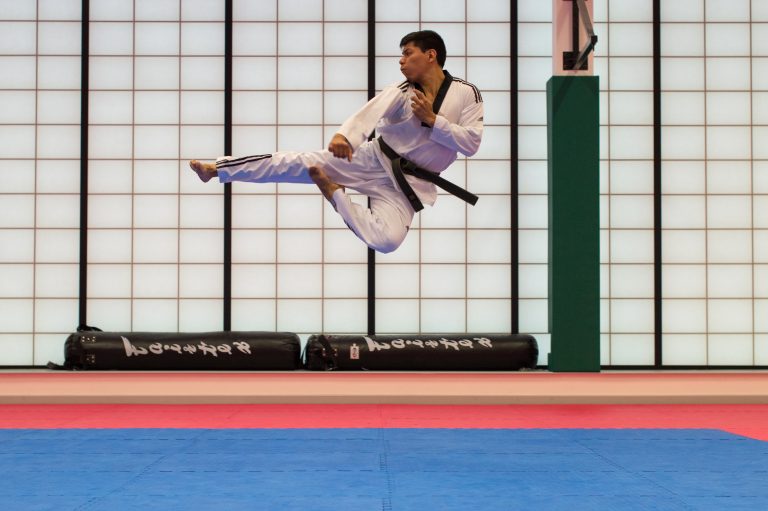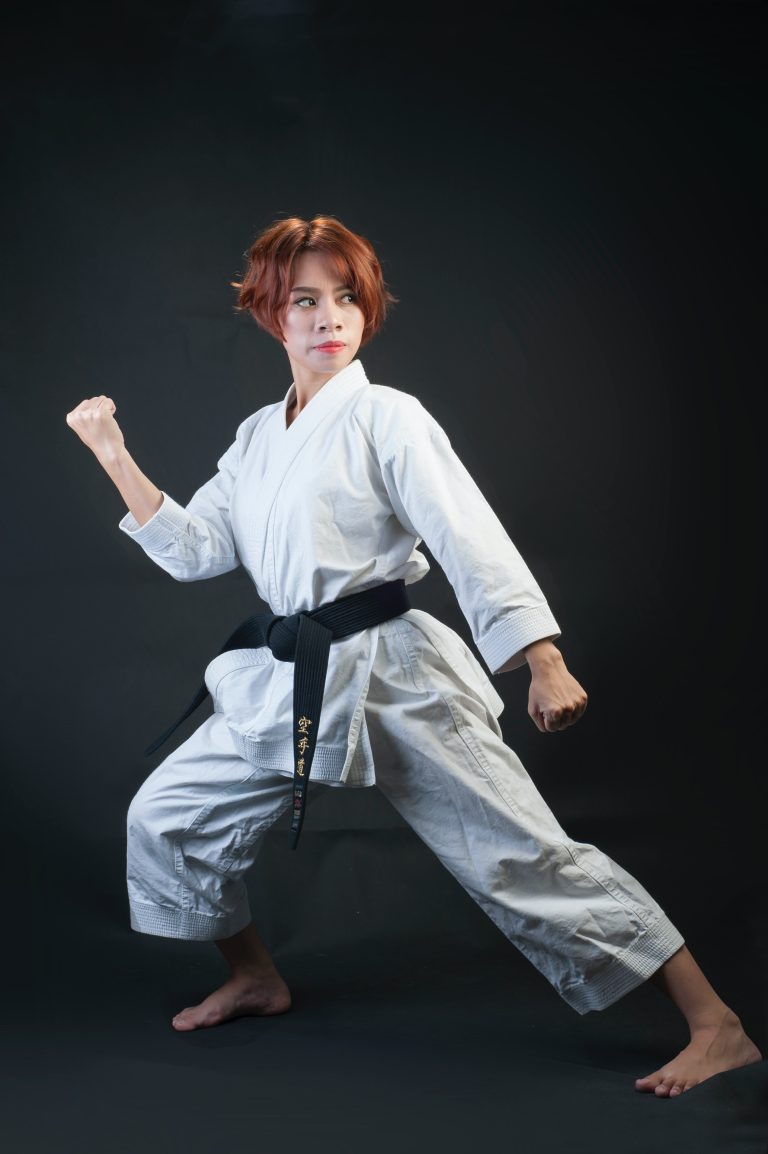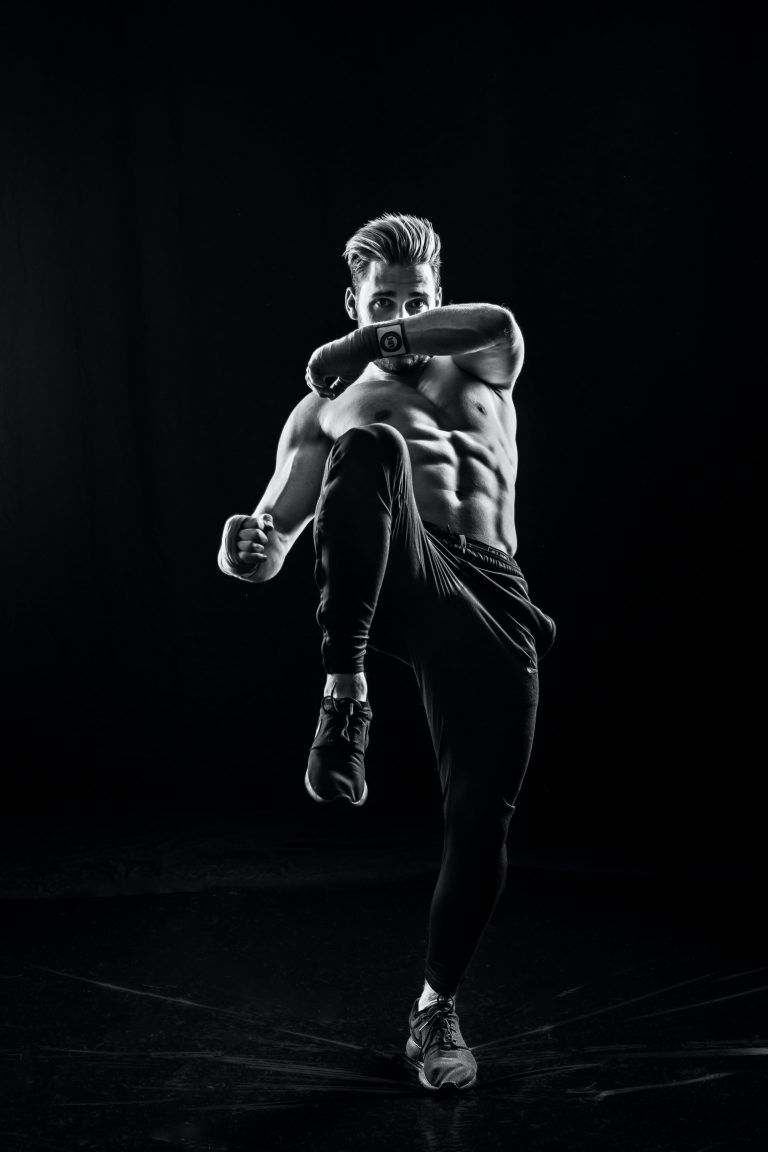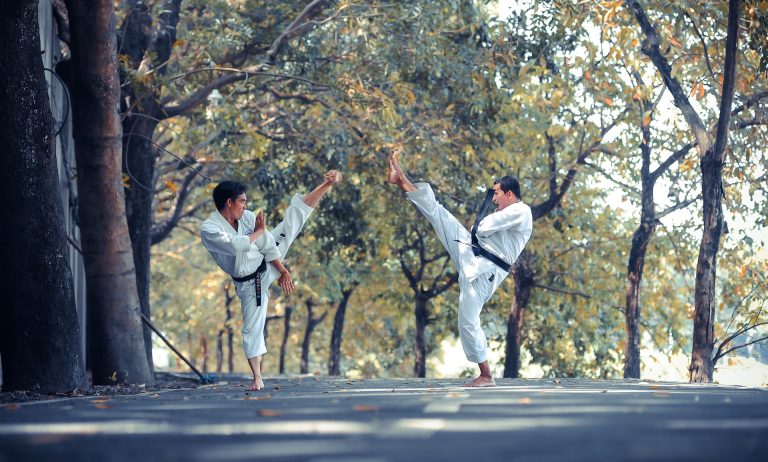Everything You Need to Know about Defending Yourself with Karate
In the modern dojo, karate has become a popular martial art with practitioners from all walks of life. But one of the most common questions we hear is: “How can I use karate to defend myself?” Obviously, karate is an effective form of self-defense that, when studied correctly and correctly applied, can protect you in dangerous situations.
To answer this question, we need to consider karate’s history and principles, how to apply the concepts and techniques in different self-defense scenarios, and the physical and mental benefits of training in this martial art. In this article we’ll provide an in-depth exploration of all these topics, so you can gain a better understanding of the art and its potential for protecting yourself.
The History and Philosophy of Karate
Karate is a martial art historically native to Okinawa, Japan, and is believed to have originated in the 14th century. It was initially developed for battlefield combat between samurai as unarmed fighting techniques, but it evolved over time into an effective form of self-defense.
Karate is a combination of martial arts from other areas, including southern Chinese kung fu and Okinawan fighting techniques. Karate practitioners use four primary techniques — blocking, striking, grappling and submission holds — to defend themselves against attackers. The focus of karate is on defending without having to inflict harm on another person, although many instructors also emphasize inflicting pain if necessary.
Karate is founded on the principle of using minimal force to subdue an attacker while protecting oneself, and it is meant to be used as a last resort. Traditional karate promotes good morals, respect and self-discipline, while also stressing the mental aspects of martial arts such as confidence, awareness and unshakeable spirit.
Karate Techniques to Employ in Self-Defense
In self-defense settings, karate practitioners use a variety of moves and techniques to deter or evade attackers. In some cases, practitioners may issue a loud verbal warning as a first line of defense. This is not only intimidating but can help draw attention to the attacker which may cause them to reconsider their actions.
When verbal warnings don’t work, karate practitioners can employ various strikes and blocks to protect themselves from incoming attacks or dangerous weapons. Common strikes used in self-defense situations include palm heel strikes, elbow strikes, hammer fist strikes and knee strikes. These techniques can be employed quickly and with little energy expenditure.
Blocks are also an important aspect of self-defense with karate. Deflecting punches or kicks is an effective technique for avoiding blows as well as disarming attackers. Blocking also helps conserve energy which can be used later in the altercation if necessary.
Grappling and Submission Holds
In more serious self-defense situations, karate practitioners may need to use grappling and submission holds to subdue attackers. These holds are designed to disable an attacker while minimizing injury to them, or even without relying on physical force.
Grappling involves taking an attacker to the ground then using pinning holds such as joint locks and chokes to control them until help arrives or until the defender escapes safely. Grappling can also be used for offensive purposes in order to gain the upper hand in a fight.
Submission holds are also used by karate practitioners in self-defense situations. These holds involve manipulating an attacker into a position where they must either give up or risk injury upon refusing to submit. These holds must be applied correctly in order to be effective and safe for both parties involved in the altercation.
The Benefits of Training in Karate
While karate provides excellent skills for defending oneself in a variety of situations, there are additional benefits that come with its practice.
Karate promotes physical fitness since it requires regular practice and physical conditioning to master its forms and techniques. Karate also encourages mental discipline as it requires practitioners to develop a focused state of mind while training. The underlying principles of karate also promote a humble attitude that helps practitioners handle difficult situations without rash decisions.
Moreover, training in karate promotes self-confidence since it teaches practitioners how they can rely on themselves in difficult situations. Finally, studying karate fosters respect since it requires practitioners to both respect those around them and control their own behavior during training sessions and outside of them.
Conclusion
Karate is an incredibly effective form of self-defense that has been honed over centuries of practice and refinement. Understanding its techniques and principles allows practitioners to protect themselves in difficult situations without inflicting harm on attackers. Karate teaches practitioners how to properly employ physical techniques such as striking, blocking and submissions holds as well as mental strategies such as discipline, focus and respect. By learning how to use karate’s strategies effectively, practitioners gain the skills necessary to protect themselves while also gaining physical and mental benefits from their training and better equipping themselves for life’s various challenges.
Everything You Need to Know about Defending Yourself with Karate
Karate is a Japanese martial art that originated from Okinawa. It’s primarily focused on self-defense techniques, hand-to-hand combat, and weaponless fighting. If you’re planning to learn karate, or you’ve already started, you may have some questions about how it works and what it can do for you. In this post, we’ll answer the most frequently asked questions about defending yourself with karate.
1. What is Karate?
Karate is a martial art that’s designed to help individuals defend themselves from physical attacks. It’s a combination of physical and mental training that’s intended to improve an individual’s physical fitness, self-discipline, and self-confidence.
There are different styles of Karate with their unique techniques and philosophies, but they all focus on the same goal of helping you to defend yourself.
2. What benefits does Karate have?
Karate has several benefits that can impact an individual in various ways, including:
a. Physical Fitness
Karate is an intense physical activity that involves a lot of movements, kicks, and strikes. As a result, it improves one’s physical fitness by enhancing strength, endurance, and flexibility.
b. Self-Defence
Karate is designed to provide individuals with practical self-defense techniques that they can use to defend themselves against attackers.
c. Mental Health
Karate also helps to improve mental health by fostering self-discipline, focus, and a positive attitude. It’s also an excellent stress reliever that helps individuals to relax and release tension.
d. Social Benefits
Karate provides an excellent opportunity for meeting new people and making new friends. By joining a karate club or class, you can surround yourself with like-minded individuals who are also pursuing the same goals as you.
3. How long does it take to learn karate?
The length of time it takes to learn karate varies, and it depends on several factors, such as your dedication to training, your natural ability, and the level of instruction you receive. Generally, it takes between 3 to 5 years to obtain a black belt, which is the highest rank in karate.
4. What should I look for in a Karate dojo?
When looking for karate classes or dojos, there are a few factors that you should consider before making a final decision. These include:
a. Instructor Qualification
Your training is only as good as your instructor, so it’s essential to choose a well-qualified and experienced instructor.
b. Training Style and Philosophies
Different karate dojos have unique training styles and philosophies, so it’s crucial to choose one that aligns with your goals and interests.
c. Facilities
The facilities of the dojo should be clean and well-maintained, and the equipment should be in good condition.
d. Safety
Your safety should be the top priority of the dojo. The instructors should prioritize safety during training and have appropriate safety equipment available.
5. Can anyone learn karate?
Yes, anyone can learn karate, regardless of their age or gender. Karate training can be tailored to suit all fitness levels, and there are even programs available for children.
6. What equipment do I need to practice karate?
You will need a karate uniform called a gi, which consists of a white jacket and pants, a colored belt to indicate your rank, and protective gear like shin guards, gloves, and a mouthguard.
7. Is karate effective for self-defense?
Yes, karate is an effective self-defense technique when adequately taught and practiced. Karate techniques focus on utilizing the opponent’s strength against them, and it provides students with the necessary skills to defend themselves against real-world attacks.
8. How can I make the most out of my karate training?
To make the most of your karate training, you should:
– Attend regular classes and practice consistently
– Focus on perfecting the basics of karate techniques
– Set goals for yourself and track your progress
– Stay motivated and committed to your training
9. Can you use karate techniques in a real-life situation?
Yes, karate techniques can be used in real-life situations. However, it’s vital to note that karate training should be focused on self-defense and not for initiating attacks. Knowing how to defend yourself can give you the confidence to handle difficult situations competently while keeping yourself safe.
10. Do I need to be fit to start learning karate?
No, you don’t need to be fit to start learning karate. Karate training can be tailored to suit different fitness levels, and instructors can provide modifications for those who need them. As you progress in your training, you will become fitter, more flexible, and more knowledgeable about your body.
Conclusion
Karate is an excellent martial art that can be learned by anyone regardless of age or gender. It provides numerous physical and mental benefits that can improve an individual’s health, fitness, and self-confidence. Choosing the right dojo and instructor is crucial, and consistent commitment and practice are necessary to become a proficient karate practitioner.
Inhaltsverzeichnis






